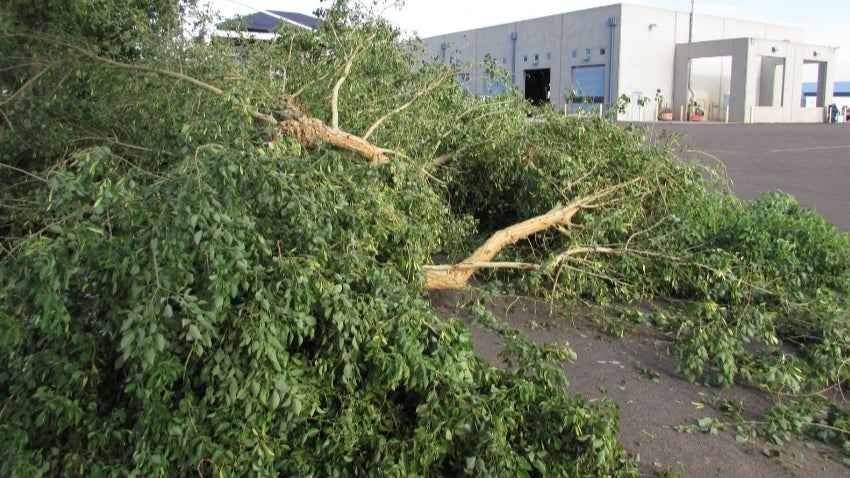Trees may be the most important living element in a landscape. They require consistent care regardless of conditions, and therefore the highest priority should be on their maintenance and watering.

Drought Care for Trees
- Make sure to give trees a higher watering priority than grass or flowerbeds. Grass can tolerate long periods of drought and can be replanted easier while trees are harder to replace and take much longer to grow.
- Check frequently for drought stress including wilting, yellowing, and browning of leaf edges. Checking for signs can prevent serious diseases or insect infestations from happening in the following years.
- Water deeply and slowly. Apply water so it moistens the soil in the root zone.
- Do not fertilize trees during drought as it stimulates growth which can deplete the trees’ stored energy reserves and result in foliage.
- Prune carefully as it can cause sun scald on branches. Remove broken, dead, crossing branches to avoid secondary infections.

Monsoon Care for Trees
- Make sure watering emitters are located at the canopy edge. Wet soil is unstable which causes the tree to have a weaker foundation and can have trouble holding the trees during heavy winds.
- Apply the appropriate amount of water for your trees. Low-water trees should not be watered as much as higher-water-use trees.
- Seasonal thinning can often contribute to storm damage and in most cases, not necessary.
- Never top a tree. Wounds created by topping a tree never heal and will never regain the strength or form it previously had.
General Rules for Strong Trees
- Avoid removing limbs with foliage that shades the trunk’s tissue from harsh sun rays or sunburn can occur
- Focus 80 percent of pruning on the exterior canopy. Interior stripping of branches or lion tailing reduces the wind buffering capacity of the tree. It can also reduce foliage the tree needs to produce energy, heal wounds, and defend against pests and disease
- Mature trees need less pruning, no more than 20 percent and not every year
- Always follow the two-thirds rule. A tree should have 2/3 of its total height in the canopy and 1/3 in the visible trunk.
- Staking should only be done if the tree cannot stand without it. When needed, use two two-inch round wooden poles with a piece of rubber hose and wire to loosely secure it between the poles. Trees must be able to move gently in order to for their trunk to produce strong, dense wood.



